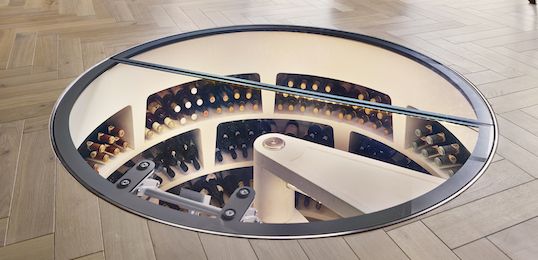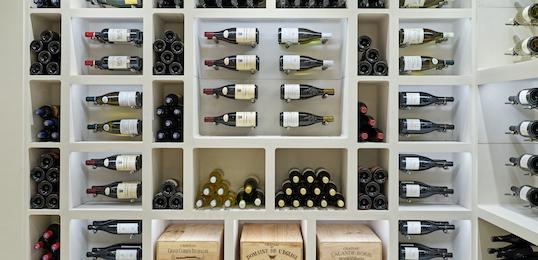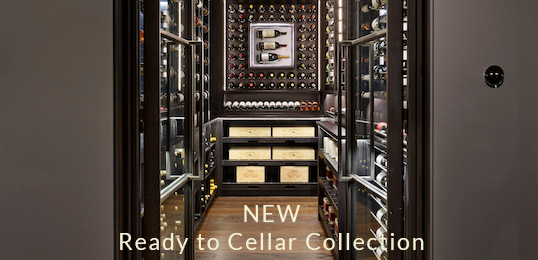Your expert can tell you what is a good wine, but he or she cannot tell you which particular wines you should prefer. So the cellar should grow with you, imperceptibly changing shape and direction as your wine knowledge grows, some wines being discarded and other choices substituted.
After purchase, the wine should be allowed to rest for a minimum of two to three weeks, and longer if there has been a protracted period of transport particularly from the other side of the World. The older the wine, the greater its need to settle down after transport. Old wines can take up to three months to recover fully from the effects of sudden movement.
Organising the cellar and cellar layout
Finally you’ve arrived at the fun part! How are you going to arrange all of your lovely specimens? There are an unlimited number of ways to organise a collection, none of them really right or wrong.
If the cellar features a comprehensive selection of the major wines of the world, it seems logical to break it up initially into white wines and red wines. Wines can be first grouped according to country of origin and thereafter (if applicable) by variety. Then it is logical for the sub-groupings to be by region or by maker.
It is incredibly easy to forget about an individual bottle stashed away unless you have organised your wines according to their projected consumption date, or that you have an efficient inventory list/system. You might want to allocate some bins or a row or two to wines that should be consumed in the short term. You can then subdivide them according to their place of origin, grape type, or producer. It is also worth considering filling your bins with bottles that you think will mature at the same time. That saves you the trouble of switching and swapping bottles from bin to bin, creating empty spots, refilling of those spots and hence lots of record keeping. One customer once showed me how he organised his cellar – each row was designated for a year of consumption. The top row of bins were full of wines that would be drunk in the current year, the second row with wines for next year. Each January he would move all the bottles up a row and make room for new purchases. In the ready to drink row, he filled the bins with the lightest wines on the left, and the wines got richer and heaver as you moved to the right.
Bin numbering
The next thing to deal with is bin numbers and bottle numbers. We recommend that each bin is given a letter of identification, running sequentially around the wall, from left to right and from top to bottom. You could use blackboard paint, or make up some numbers using your PC and laminate them. Then within each bin, a row of bottles is given a number, 1,2 or 3. Then a bottle’s identification would be B3 or CC2. Certainly the row may hold more than one type of wine, but it takes only a few seconds to locate the bottle in the row. To assist with bottle location in the row, we recommend the use of bottle tags. Sparkling wines should be stored upright. We recommend they are kept in boxes (not cardboard) and stacked under the spiral staircase on the floor. A module/bin – provides enough space to store one wooden case containing 12 bottles, or 24 bottles (Bordeaux shape) loosely laid.
Alternatively simply label the bins with numbers, and the bottles could be labelled with neck tags to identify each bottle.
Drinking
As wines in your spiral wine cellar age and mature, consider standing them upright for a few days before drinking to concentrate their sediment.


